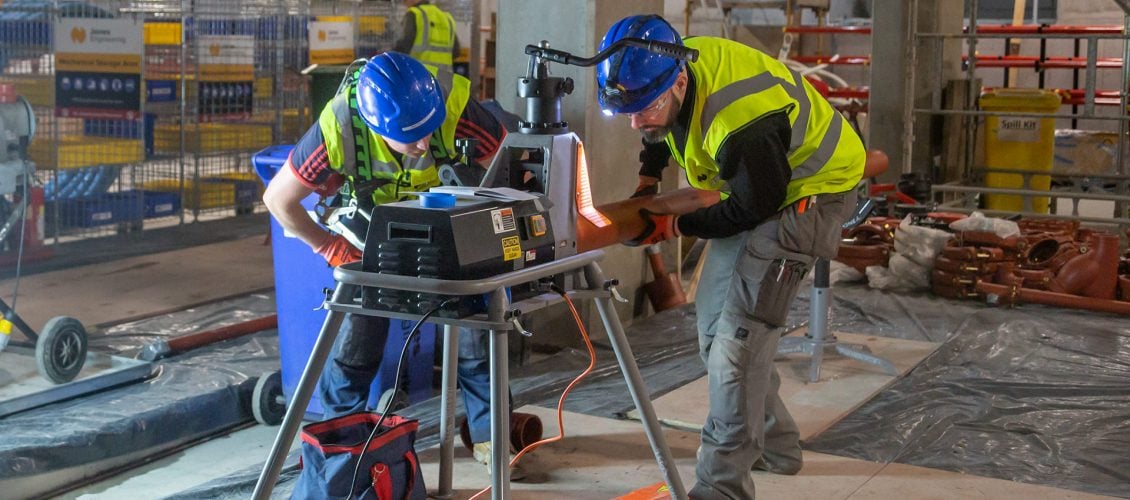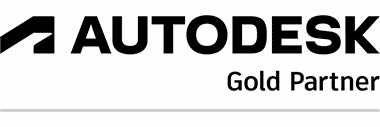
All mechanical contractors want to improve business outcomes, no matter how successful their project track record may be. As construction projects become increasingly complex each year, mechanical contractors need solutions to streamline workflows and scale with ease. Leveraging the right software, along with productivity gains among mechanical contractors and elevated owner expectations around efficiency, has the potential to directly increase profits for all stakeholders on a project.
In order to improve business outcomes and unlock increased profitability, mechanical contractors should harness software solutions designed to help them achieve their goals around producing high-quality work, optimizing communication among teams, and delivering the best results on schedule. In our latest ebook, “How Mechanical Contractors Can Leverage Software for Better Business Outcomes,” we guide you through the ins and outs of how using software tailored to the needs of mechanical contractors can improve project outcomes and set you up for success.
The Benefits of Technology for Mechanical Contractors
A well-thought-out technology strategy can solve many of the most common challenges facing mechanical contractors, including managing plans and documentation, safety, cash flow management, and more. Specifically, technology can help mechanical contractors standardize workflows, document work, mitigate risk, and win more jobs.
Standardize
When it comes to standardizing workflows, the right software solution allows mechanical contractors to choose mobile technology that teams can use across projects to stay organized. This kind of software can give you visibility on what resources, equipment, processes, and people are required for any given workflow, and can consolidate this information on one platform. Mechanical contractors can then take this information into the field for reference, improving efficiency and communication between internal teams and any unfamiliar partners on a project.
Document Work
The ability for entire teams to markup plans, attach photos, and document every detail of a job’s progress is vital to project success, as it eliminates any questions around what’s been done and when. Technology can help mechanical contractors capture the work they do on a job to stay up-to-date on scheduled maintenance. Moreover, the right software can make the process for tracking earned value as a performance metric less cumbersome and error-prone, as it automates the capturing of earned value data. This, in turn, can help reduce unnecessary labor and time spent on a project.
Reduce Risk
Risk is a part of every job, but the use of strategic technology can help mechanical contractors mitigate risk to optimize project outcomes. When all teams on a job are using the same software, everyone has access to the most up-to-date plans and documents. That means there’s a lower chance of miscommunication or missed details, like schedule milestones or budget line items, keeping projects on time and on track.
Win More Work
Perhaps most importantly, the right software can help mechanical contractors win more jobs with tools that help streamline the preconstruction process. Specifically, this software can capture more and more data with each project, giving mechanical contractors the information they need to quote future jobs with better accuracy and avoid going over budget. What’s more, technology can help mechanical contractors increase their number of bids, and more potential jobs means more opportunities for work, all thanks to data-driven software solutions.
What’s Inside
Although many mechanical contractors are still managing their work manually, finding and implementing the right technological tools can have a dramatic impact on project success outcomes. This ebook explores how mechanical contractors can identify and use the best software solutions for better business outcomes, including:
- The current mechanical contractor landscape
- Common challenges mechanical contractors face
- The benefits of a technology strategy for mechanical contractors
- How technology has helped mechanical contractors deal with inefficiencies, get accurate data and achieve better communication, save time, and improve the quality of project outcomes
- The modern mechanical contractor’s software solution,
- Adding software to the mechanical contractor’s skillset
Mechanical Case Study—McKinstry
A national leader in designing, building, operating, and maintaining high-performing properties like the Seattle Life Sciences Building, McKinstry needed a solution for improving efficiency in its earned value tracking process. On the complicated Life Sciences Building project, the company was using a 2-D-based drawing solution that it would manually mark up, conducting the takeoff process in the office and causing inaccurate results. The job’s complexity also created hurdles in comparing project data and mapping the numbers against the budget, as different teams were using different systems (i.e., measuring in pounds as well as linear feet).
Halfway through the project, McKinstry implemented the connected construction software Assemble to solve for these challenges by streamlining its data collection process and thus improving the project’s accuracy. Assemble allowed McKinstry’s project team to track the installation process in the metric of its choice, then instantly compare this to the estimate. Additionally, the McKinstry team had insight into whether the budget was spot on, heavy, or running lean, keeping the project on track. As a result, McKinstry was able to cut the time it spent on earned value tracking in half, going from spending eight hours per week to four hours per week on the process, and making the project more efficient.
It’s Time for Mechanical Contractors to Achieve Better Business Outcomes through Software
From streamlining the preconstruction process and standardizing workflows to mitigating risk and winning more jobs, the right connected construction software can help mechanical contractors meet a number of challenges. If mechanical contractors make the smartest technology choices for their organizations, they can optimize any current or future project for success.



